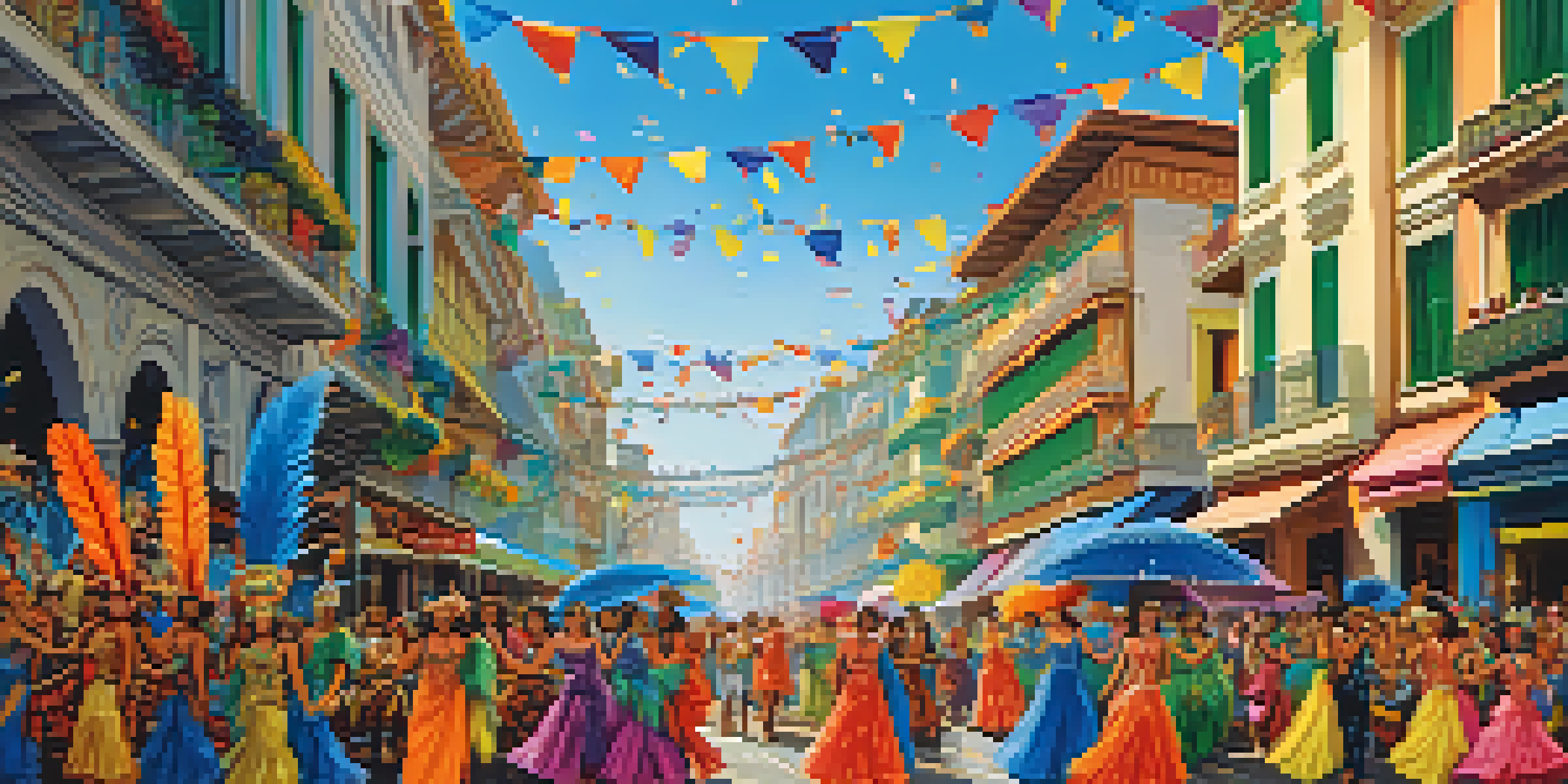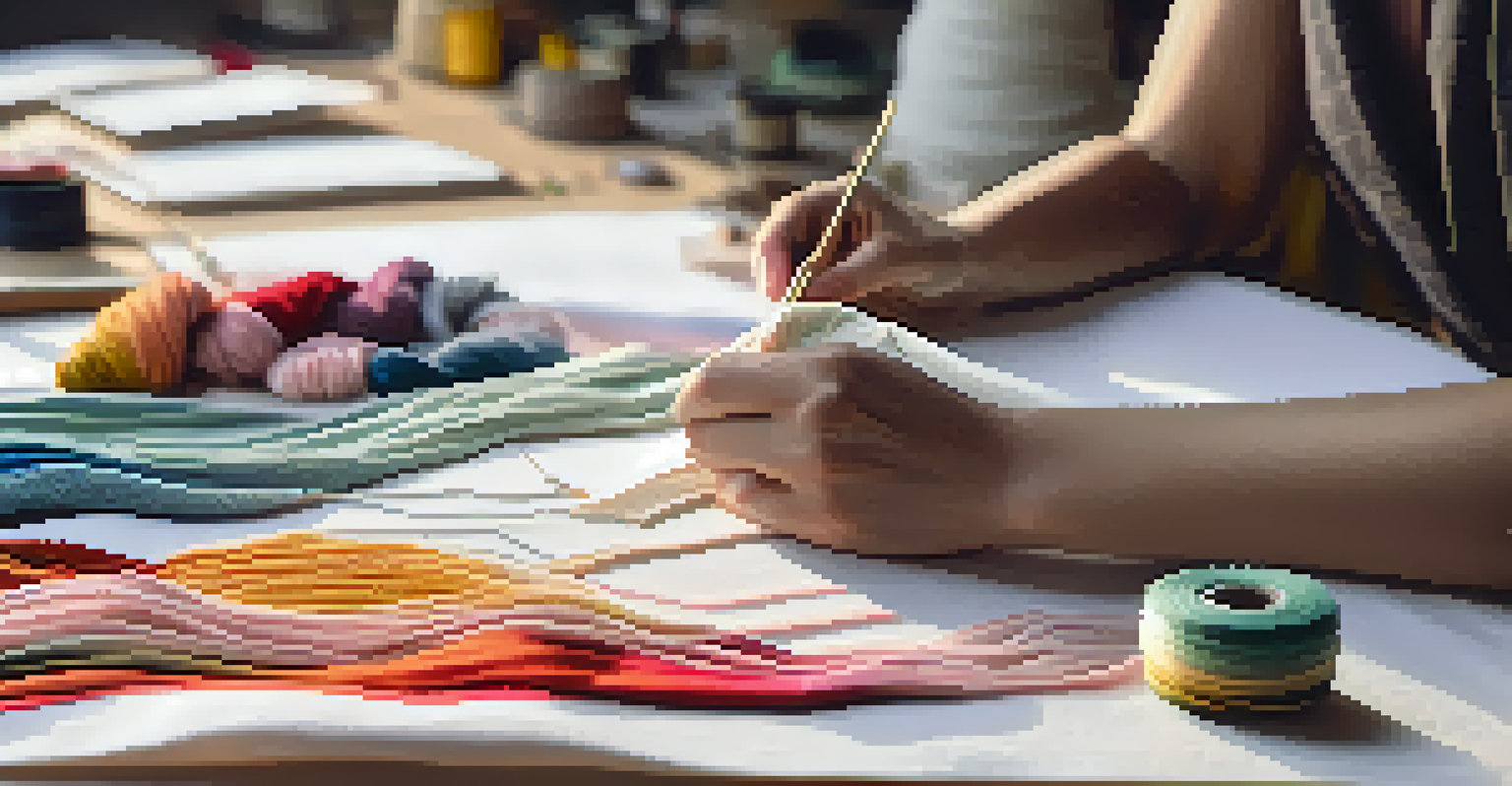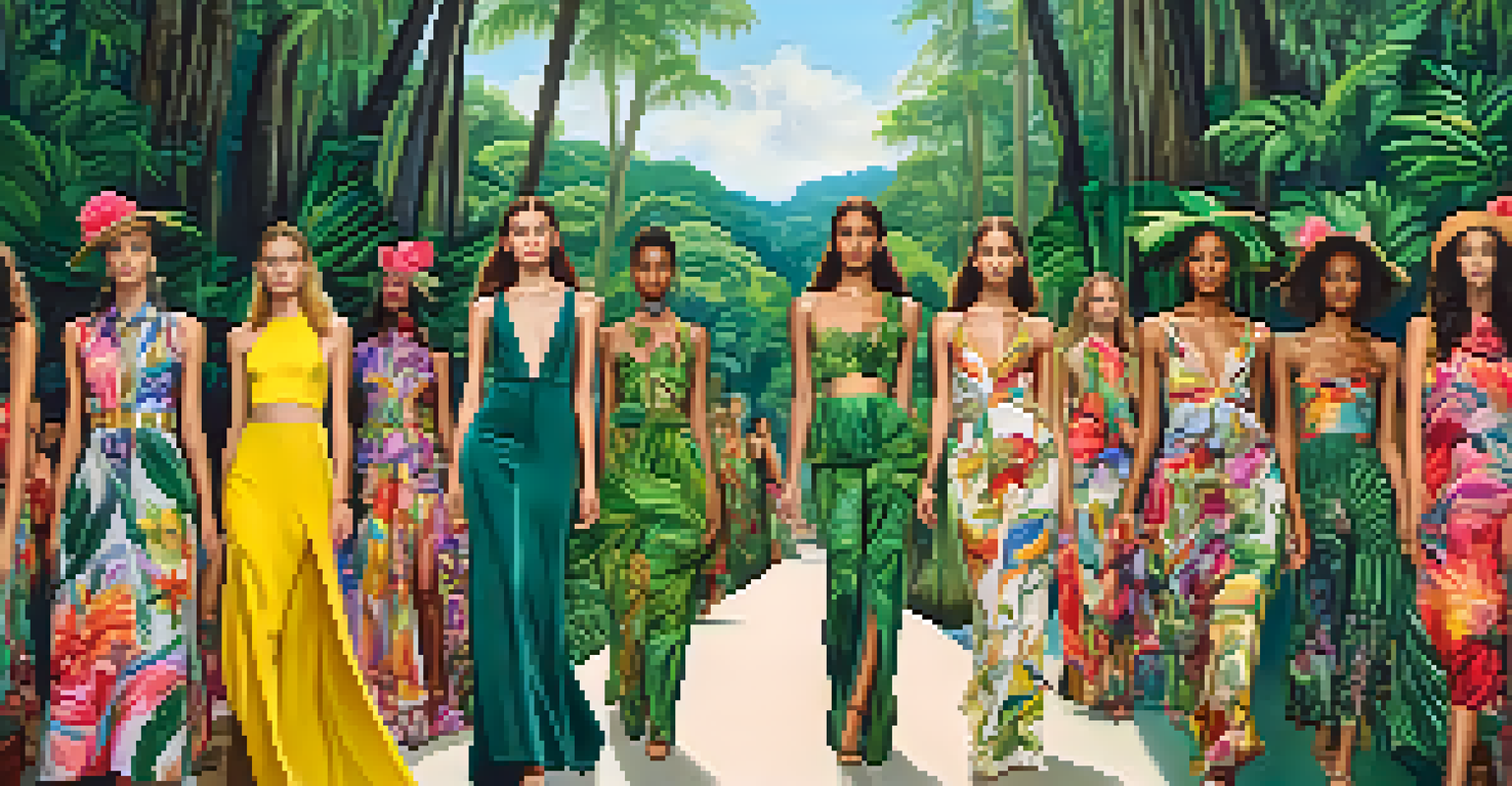Understanding Brazilian Fashion Culture: A Deep Dive

The Roots of Brazilian Fashion: A Cultural Melting Pot
Brazilian fashion is a rich tapestry woven from diverse cultural influences. From Indigenous traditions to African heritage and European styles, every thread tells a story. This blend creates a unique fashion identity that reflects Brazil’s multicultural society.
Fashion is the armor to survive the reality of everyday life.
For instance, the colorful patterns of traditional Indigenous attire can be seen in modern Brazilian clothing lines, showcasing the country's respect for its roots. Similarly, the vibrant colors and bold prints often pay homage to African heritage, especially in samba and carnival styles.
This cultural mix not only influences clothing design but also informs how fashion is perceived and celebrated in Brazil. It’s a celebration of diversity, where each piece of clothing carries a piece of history and identity.
Key Influences: From Carnival to Street Style
Carnival is arguably the most significant event shaping Brazilian fashion. This annual festival encourages extravagant costumes, showcasing creativity and cultural expression. Designers often draw inspiration from these dazzling outfits, influencing everyday fashion trends.

Street style also plays a crucial role in defining Brazilian fashion. Influenced by urban culture, local designers and fashionistas create looks that resonate with the vibrant spirit of cities like São Paulo and Rio de Janeiro. This grassroots movement often emphasizes comfort and individuality.
Brazilian Fashion's Cultural Roots
Brazilian fashion is a vibrant blend of Indigenous, African, and European influences, celebrating the country's multicultural identity.
Moreover, social media has amplified these influences, allowing street style to reach a global audience. Influencers share their unique interpretations of Brazilian fashion, making it accessible and relatable to a wider crowd.
Sustainable Fashion: Brazil's Emerging Trend
Sustainability is becoming increasingly important in Brazilian fashion. As awareness of environmental issues grows, many designers are rethinking their practices and materials. This shift is not just a trend; it’s a response to both local and global demands for ethical fashion.
Style is a way to say who you are without having to speak.
Brands are now using locally sourced materials, such as organic cotton and recycled fabrics, to minimize their carbon footprint. This not only supports the environment but also boosts the local economy, creating jobs and fostering community.
Additionally, initiatives like upcycling and promoting handmade goods are gaining traction. These practices encourage consumers to value quality over quantity, leading to a more mindful approach to fashion consumption.
Fashion Weeks: Showcasing Brazilian Creativity
Brazil hosts several fashion weeks that highlight the creativity and innovation of its designers. Events like São Paulo Fashion Week and Rio Fashion Week serve as platforms for both established and emerging talents to showcase their collections. These events attract international attention, helping to elevate Brazil's status in the global fashion scene.
During these fashion weeks, designers often incorporate themes that reflect Brazilian culture and societal issues, making their collections more than just clothing. For example, collections may address environmental concerns or celebrate cultural heritage, adding layers of meaning to their work.
Sustainability in Fashion Growth
An increasing focus on sustainability is reshaping Brazilian fashion, prompting designers to adopt ethical practices and locally sourced materials.
Attending these events is not just about the clothes; it’s an immersive experience that captures the essence of Brazilian creativity. From the music to the atmosphere, every detail contributes to a celebration of fashion as an art form.
Iconic Designers: Trailblazers of Brazilian Fashion
Brazil has produced several iconic designers who have made significant contributions to the fashion industry. Names like Alexandre Herchcovitch and Oskar Metsavaht have not only defined trends but have also brought Brazilian culture to the forefront of global fashion. Their unique perspectives and innovative designs continue to inspire a new generation of fashion enthusiasts.
These designers often blend traditional Brazilian elements with contemporary aesthetics, creating pieces that are both modern and rooted in heritage. This approach allows them to communicate powerful messages while showcasing their artistic vision.
Moreover, collaborations with local artisans and communities further enhance their designs, promoting cultural authenticity. This commitment to cultural representation and innovation solidifies their status as leaders in the fashion world.
The Role of Fashion in Brazilian Identity and Expression
Fashion in Brazil is not just about aesthetics; it’s a vital form of self-expression and identity. People use clothing to communicate their personalities, beliefs, and cultural backgrounds. This is particularly evident during festivals and celebrations, where fashion plays a central role in expressing pride and community.
For example, during Carnival, participants often wear costumes that reflect their heritage and social commentary, turning the streets into a vibrant canvas of artistic expression. This sense of identity is further reinforced by the eclectic mix of styles that encompass everything from beachwear to high fashion.
Challenges and Future Trends
Despite facing global competition, Brazilian designers are leveraging their unique cultural heritage to innovate and appeal to both local and international markets.
Ultimately, fashion in Brazil serves as a powerful tool for storytelling, allowing individuals to express their unique narratives while celebrating their cultural heritage.
Challenges Facing Brazilian Fashion: Navigating Global Trends
Despite its vibrant scene, Brazilian fashion faces challenges in navigating global trends. The fast-paced nature of international fashion can sometimes overshadow local designers and their unique offerings. Many Brazilian brands struggle to compete with larger, established names, making it difficult to gain visibility.
Additionally, economic factors can impact the fashion industry in Brazil. Fluctuations in currency and trade policies can affect material costs, pushing some designers to compromise on their values or quality. This can create a tension between staying true to one's artistic vision and adapting to market demands.

However, many Brazilian designers are finding ways to leverage their uniqueness as a strength. By emphasizing their cultural heritage and sustainability, they are carving out a niche that resonates both locally and internationally, proving that challenges can lead to innovation.
The Future of Brazilian Fashion: Trends to Watch
As we look ahead, Brazilian fashion is poised for exciting developments. The increasing focus on sustainability and ethical practices will likely continue to shape the industry. This shift not only aligns with global trends but also reflects a growing awareness among consumers about the impact of their choices.
Moreover, the rise of digital platforms and e-commerce is changing how Brazilian designers reach their audiences. With more consumers shopping online, there’s a greater opportunity for local brands to connect with a global market, showcasing their unique styles beyond borders.
Finally, the emphasis on inclusivity and diversity is expected to become even more pronounced. As brands strive to reflect the diverse population of Brazil, we can anticipate a broader range of styles that cater to different body types, cultures, and personal expressions, making Brazilian fashion more accessible and representative.